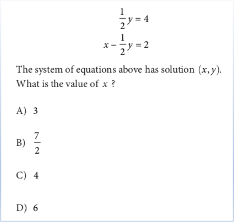“When driving to school, my dog Lucky always joins me in the backseat.”
…
I think we’d all agree that the sentence above is adorable, and the image of a dog refusing to let her owner go to school alone brings us a great deal of joy. However, it unfortunately does not change the fact that this is an example of a “dangling modifier,” a grammar concept where the modifier (“When driving to school”) is attached to the wrong subject (“my dog Lucky…”). It’s a fun concept to teach, as it often inadvertently poses silly situations—like my dog Lucky driving to school—and therefore tends to resonate with students. They laugh, identify the subject, change said subject to match the modifier, and la-di-dah, they are on their way!
Sounds simple enough, right? Not quite—unlike my dog, students are not always so…fortunate. What’s lurking here is a bit of implied required knowledge. If, for instance, students cannot readily identify the subject of a sentence, or what a “subject” is in general, then the error becomes much more difficult to both recognize and fix. If students improperly identify the portion before the comma as an “Independent Clause”—or something that could stand alone as a complete sentence—then they might try and fix the error by incorrectly putting a period after “school.”
In other words, there is an assumed foundation in SAT/ACT prep that students need to actually begin their prep—and not just in the grammar, but in all areas of the tests. If that foundation is not secured beforehand, the process can become a very discouraging—and ultimately fruitless—endeavor.
This idea is even more apparent on the math:

In a problem like the above, the polished student has several options: namely, solving directly for y and evaluating x from there, working backward from the answer choices, or graphing (this is the calculator section) to find the intersection points. But—what happens when a student is unable to solve an equation like the top one shown? There goes the first option. Working backward and plugging in for x would produce a similar equation in the second as in the first, so there goes option two. If a student does not know that a solution to a system of equations is the intersection point between those equations, then there goes option three. Indeed, if that’s the case, they might be completely unfamiliar with the notion of a system of equations, and they might get scared off altogether.
So what does this mean? Should students begin their SAT/ACT prep NOW, taking practice tests day and night, the nine year-olds that they are? I would say, not quite. In fact, I’ll often tell parents that starting test prep “too early” is a real issue, because what many test prep companies consider to be “test prep” is exactly that: practice test after practice test after practice test. This tends to burn students out, or worse, get them acclimated to incorrect testing strategy. As one of my fellow tutors likes to say, “Practice does not make perfect. It makes permanent.”
That said, it is never too early to start securing the foundation of test prep. Not only does it allow students to engage their long-term memory, but it also enables them to understand the why of both concepts and strategies. It gives them the time and the opportunity to have those “a-ha” moments, the ones that really stick, the ones that make prep less about panicked cramming and more about valuable learning.
When I am tutoring individuals or teaching classes, I will stay on the foundational material as long as I possibly can. Only afterward will I allow students to enter “practice test mode”: that period of taking practice test after practice test to ingrain the strategies that we’ve discussed and modify them to their comfort level. Many people think that the most important aspect of taking all of those tests is that students understand their mistakes and move forward from each one. However, that process is impossible without a secured foundation.


